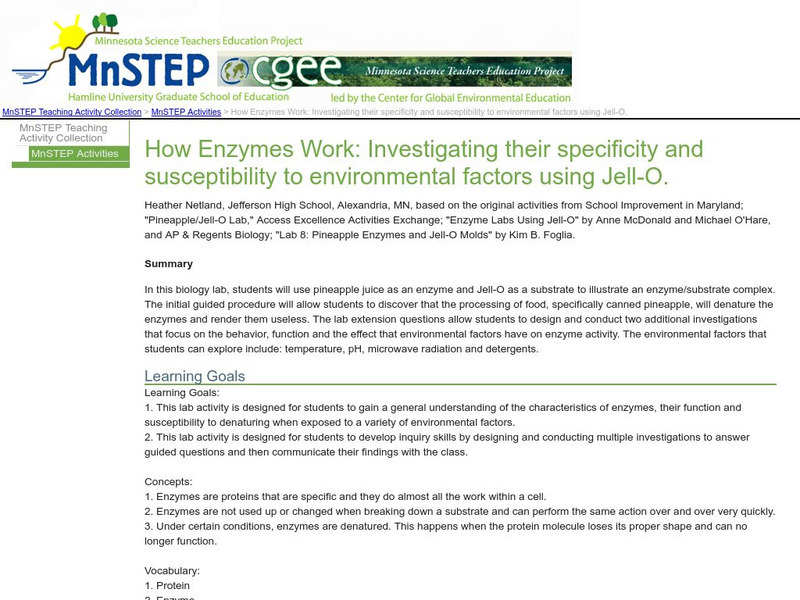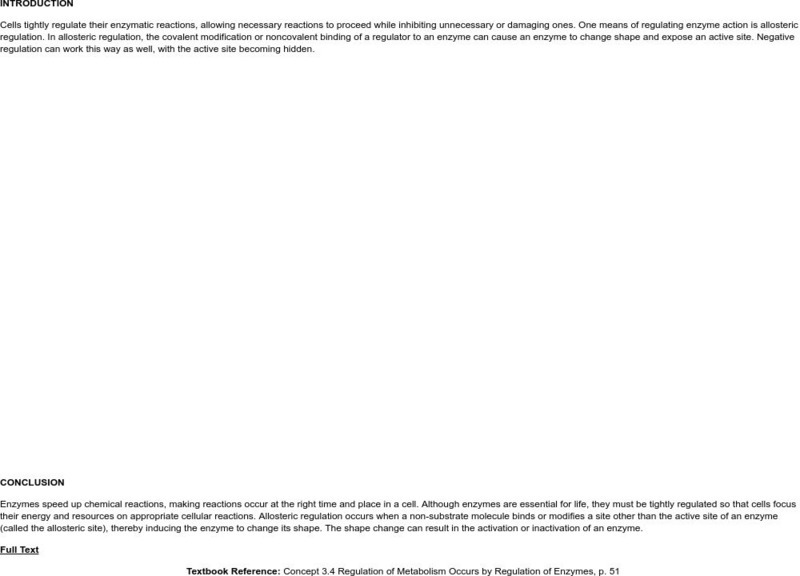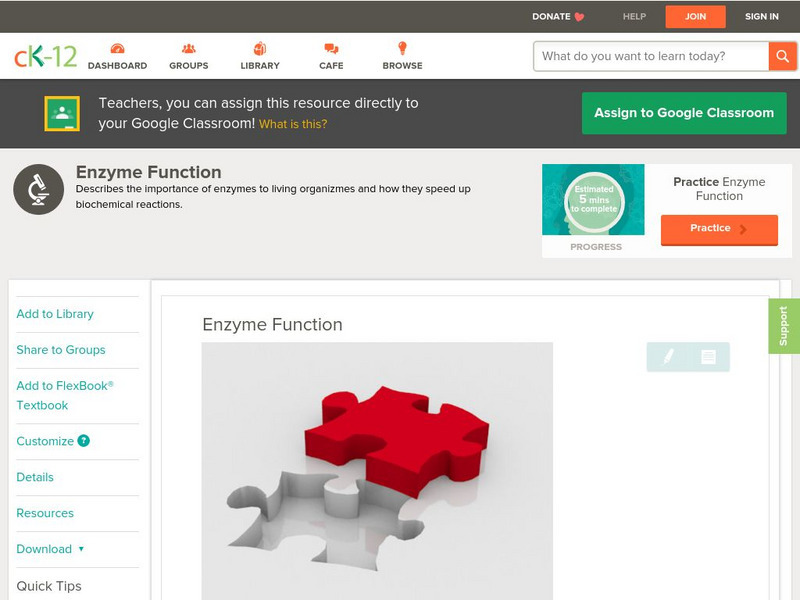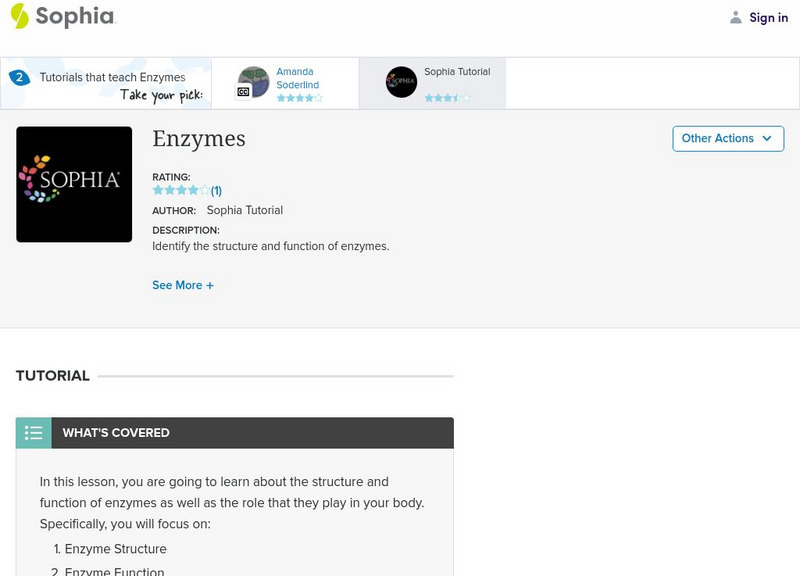Curated OER
Amylase
Learners examine what amylase is and its history. In this digestive activity students study the effect amylase has on starch and how temperature affects the rate of activity.
Cornell University
Who’s Got The Flu?
Become an immunologist for the day. Scholars elicit the use of the enzyme-linked immunoabsorbent assay (ELISA) to diagnose an infectious disease. Through the process, they learn about the immune system response to infectious diseases.
Curated OER
AP Biology Lab Review
A seventy-two slide PowerPoint that reviews several lab explorations done in an AP Biology course. For each lab there is a description, concepts, and conclusions. Many pictures and graphics make this visually appealing, but it would not...
Curated OER
Cellular Respiration stage 1: Glycolysis
Ten reactions involved with the process of glycolysis within cellular respiration are summarized here. The aerobic stages and anaerobic interactions leading to fermentation are detailed and wonderful diagrams to support the information...
Curated OER
Toothpick Breakdown
Fourth graders model the activity of an enzyme acting on a substrate and observe relationships. Have students place toothpicks in a pile. One member of the team should break as many toothpicks as possible, in 10 seconds.
Curated OER
Enzymatic Reaction
Students explore the effect enzymes have on reactions. They demonstrate the process of enzymatic reaction by making cheese. after experimentation, they answer a series of questions.
Curated OER
Chemistry of Food
In this chemistry of food activity, students complete 20 various types of questions related to food and nutrition. First, they complete a crossword puzzle with vocabulary terms. Then, students use the figure shown to write the...
Curated OER
Organic Molecules
Students explore organic compounds. Using humor, factual and conceptual correctness, students create a skit explaining organic compounds. Students include topics such as sugar, polymerization, unraveling of proteins, and substrates. ...
Curated OER
Molecular Evolution in Plants
Students examine chlorophylls. They explore the absorbing pigments in a variety of plants. Through activities, students determine spectrophotometrically. They compare plant proteins from the family Brassicace to assess the level of...
Curated OER
Bioluminescence
Learners differentiate chemiluminescence from bioluminescence. In this biology lesson, students explain how fireflies and other animals emit light. They discuss the applications of engineered bioluminescence.
Curated OER
Producing a Strain of E. coli that Glows in the Dark
Students observe the experimental process called bacterial transformation and demonstrate phenotype changes in bacteria that have been transformed with an antibiotic-resistance gene and a metabolic marker. They create a luminescent...
Biology Junction
Cellular Respiration
Which food molecules must be present for cellular respiration to occur? Scholars view an informative presentation to better understand the process of cellular respiration. It details each step, focusing on the locations and the four main...
Curated OER
PhysioEx: Chemical and Physical Processes of Digestion
In this anatomy worksheet, students complete 22 review questions in the format of short answer, table completion, and fill in the blank after finishing an online virtual experiment about the chemical and physical processes of digestion.
Curated OER
Organci Molecules
Students explore organic molecules in an unusual way. This allows students to incorporate this difficult knowledge into ways of thinking and exploring that they value. Students are placed in groups of four, with the attempt to include...
Curated OER
Molecular Evolution in Plants
Students are using a paper chromatography study that is suitable for introductory biology. The absorption spectra studies and gel electrophoresis studies are appropriate for students who have complete both introductory biology and...
Curated OER
RP Word Search Puzzle
For this literacy worksheet, students find the words that are related to the concepts that are the theme of the word search. New vocabulary is the focus of the puzzle.
Science Education Resource Center at Carleton College
Serc: How Enzymes Work
In this biology lab, students use pineapple juice as an enzyme, and jello as a substrate to illustrate an enzyme/substrate complex.
Macmillan Education
W.h. Freeman Publishing: Allosteric Regulation of Enzyme
Reactions in cells must be regulated and one way to do this is using allosteric molecules. These regulators can activate enzymes or inhibit them. This tutorial explains exactly how allosteric regulation works using words, narration, and...
Sophia Learning
Sophia: Active Site: Lesson 4
This lesson shows that an active site is the space on an enzyme where a substrate would attach. It is 4 of 4 in the series titled "Active Site."
CK-12 Foundation
Ck 12: Biology: Enzyme Function
[Free Registration/Login may be required to access all resource tools.] Describes how enzymes speed up biochemical reactions.
BiologyWise
Biology Wise: What Are Enzymes and How Do They Work?
Explains what enzymes are, the three broad categories, their working mechanism and two theories developed to explain this, and factors that impact enzyme activity.
Other
University of Akron: General, Organic, and Biochemistry: Enzymes [Pdf]
Slideshow notes introduce enzymes: their purpose, process, and importance.
BiologyWise
Biology Wise: Important Factors That Influence Enzyme Activity
Explains what is meant by enzyme activity and the factors that impact on their ability to function. Looks at temperature, pH value, substrate concentration, enzyme concentration, the presence of inhibitors, and allosteric factors that...





















